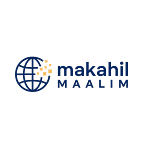Think you need a paid domain to grow a successful blog? I used to think so too — until I built one myself using free tools only, and it worked.
In this post, I’ll share how I created my blog without buying a domain or hosting — and how I managed to grow it into something valuable over time. Whether you’re just starting out or working with zero budget, this guide will help you start your own blog today.
Why I Didn’t Buy a Domain
When I began, I didn’t have money to spare. I wasn’t ready to invest in a domain, and honestly, I didn’t know if blogging would work for me.
That’s when I discovered Blogger.com — a free blogging platform by Google. It gave me everything I needed: a place to write, host my content, and a .blogspot.com subdomain that looked like this: yourname.blogspot.com. That’s how makahilmaalim.blogspot.com was born.
Step 1: Choosing the Right Niche
Before launching, I picked a niche I was passionate about — freelancing, blogging tips, and online work. I wanted to write content that could help others and reflect my own experience.
This was important because blogging isn’t about writing once and waiting for magic — you need consistency, and passion helps with that.
Step 2: Setting Up the Blog
Creating the blog on Blogger was simple:
- Signed in with my Gmail account
- Chose a blog name
- Picked a theme (I started with “Simple” and later customised it)
- Created my free Blogspot domain
From there, I started customising things to make the blog look like a real website.
Step 3: Designing It Like a Pro
I knew the “free” label didn’t have to mean “ugly.” I made my blog visually appealing by:
- Creating a clean logo with Canva
- Setting up a responsive layout
- Using a sticky navigation menu and clean sidebar
- Adding important pages in the footer and menu
- Creating a consistent colour palette and fonts
This gave visitors a professional feel from day one.
Step 4: Publishing Helpful Blog Posts
I focused on content — not flashy designs or expensive tools. My posts were:
- Over 800–1000 words each
- Formatted properly with headings, bullet points, and short paragraphs
- SEO optimised with titles, keywords, and meta descriptions
- Written to solve problems (not just share opinions)
Some of my early topics included:
- How to start freelancing with no experience
- Best tools for beginner bloggers
- Free platforms for online work
Step 5: Promoting Without Spending a Coin
Traffic won’t just appear. I promoted every post manually through:
- WhatsApp Status and Groups: I shared my link with catchy captions.
- Facebook Groups: Joined groups related to freelancing and blogging.
- LinkedIn: Reached professionals and fellow creatives.
- Quora: I answered questions and dropped my blog links where relevant.
- Pinterest: Created simple pins using Canva and linked them to my posts.
Even without paid ads, I was getting clicks and comments. Little by little, my blog traffic started growing.
Step 6: Staying Consistent
This was the hardest part. Most people quit when they see no results. I didn’t.
I published new posts almost every other day. I stayed active on social media. I treated my blog like a job — even when no one was watching.
That consistency paid off. Within a month, I had over 20 posts, pages fully set up, and started showing up in Google Search.
Step 7: Monetising the Free Blog
Eventually, I wanted to earn from my work. And yes — you can earn even with a .blogspot.com domain. I did it by:
- Google AdSense: I applied and got approved with my free blog.
- Amazon Affiliate Program: I joined and added affiliate links to tools I recommend.
- PartnerStack: Promoted useful platforms like Grammarly and Canva.
- Fiverr Affiliates: Promoted freelance gigs and tools for beginners.
I also started collecting feedback and comments from readers — and that’s when I realised: this blog was no longer “just a free one.” It was a real online business.
Lessons I Learned
Here’s what I discovered on this journey:
- You don’t need a fancy domain to be helpful or successful.
- Free tools, when used well, can take you far.
- Starting is more important than spending money.
- Consistency builds trust — and eventually results.
Would I Still Recommend Starting for Free?
Absolutely. If you’re a beginner with no funds, use what’s available. Get on Blogger, write value-packed content, and share it widely. Then, once you grow, you can upgrade later to a custom domain or even move to WordPress.
What matters most is starting. Don’t let a lack of a domain stop your dream.
Final Thoughts
I built something from nothing — no paid tools, no fancy setup, no ads. Just free platforms, dedication, and real value. If I can do it, you can too.
Don’t wait for “perfect.” Use what you have. Your voice matters.
💡 Want to see how I monetise my blog? Read: 7 Smart Freelancer Investments Under $50
🎯 If you're new to freelancing, start here:
🛠 Need tools for blogging? Don’t miss: 5 Tools I Use as a Blogger
👉 Want to start your free blog today? Reach out or drop your questions in the comments below!



No comments:
Post a Comment